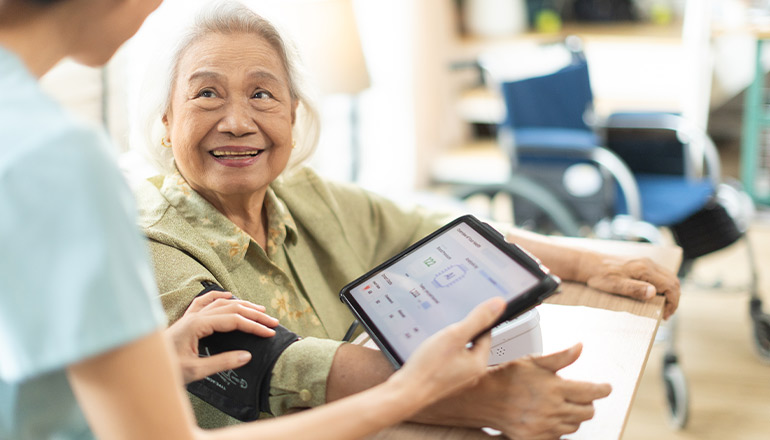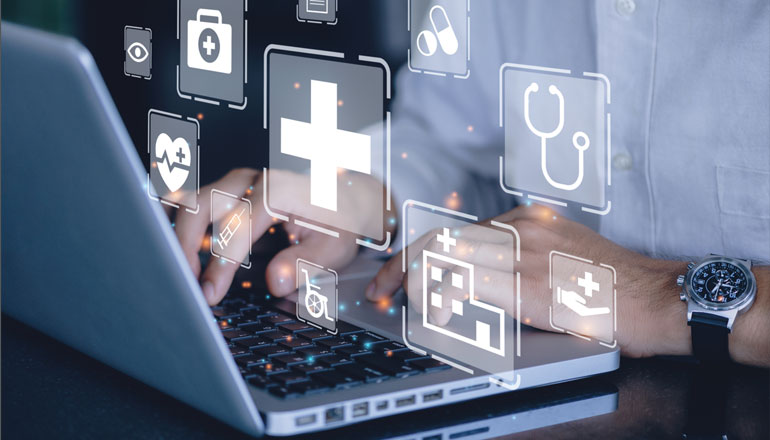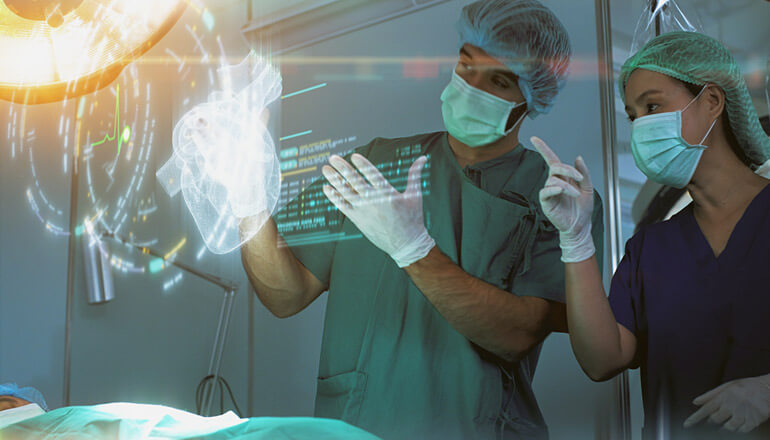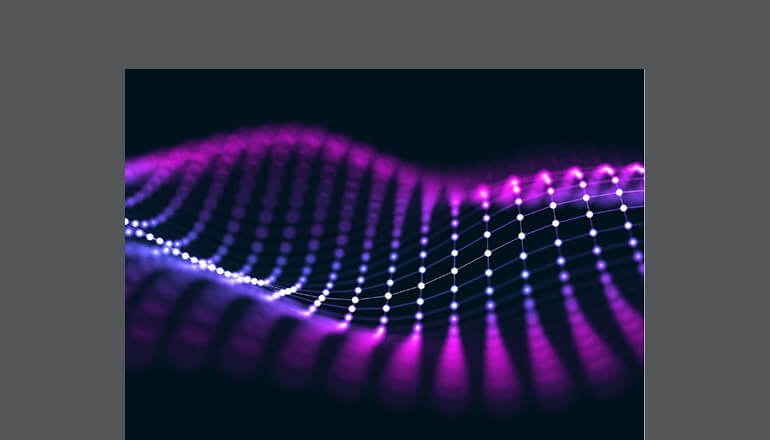Article
Why the Internet of Medical Things
Is the Future of Healthcare
The Internet of Things (IoT), a network of wirelessly connected physical devices that exchange data, has transformed the healthcare industry — and it shows no signs of stopping.
By Lana Gates / 18 Feb 2021 / Topics: Intelligent edge
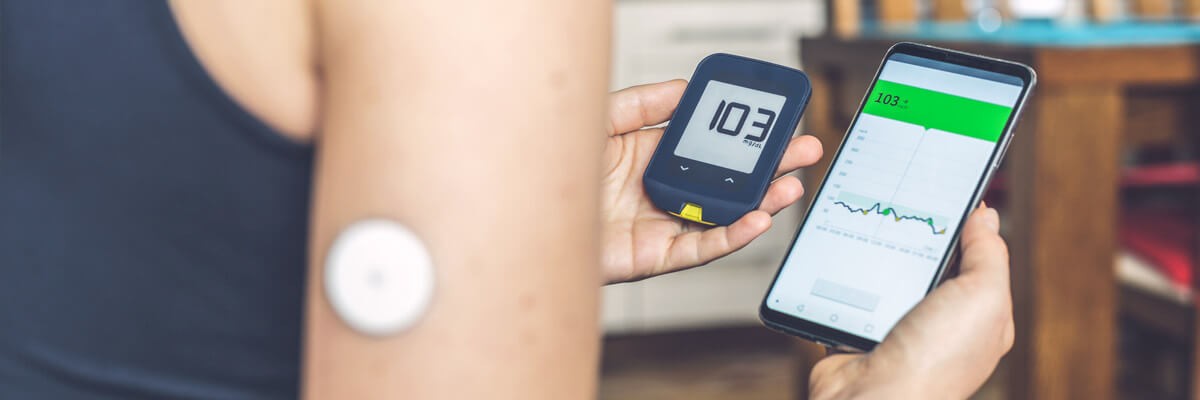
As recently as 60 years ago, physicians made house calls in person to check on their patients. Technology has given rise to “house calls” via telemedicine, allowing patients to engage with healthcare practitioners with fewer in-person visits. This practice has been important in the wake of COVID-19. But the applications of the IoT in healthcare go far beyond telehealth.
Healthcare IoT, also referred to as the Internet of Medical Things (IoMT), has enabled remote patient care, improved hospital and pharmaceutical processes, and increased data accuracy. In-hospital hygiene monitoring devices help prevent patient infections. IoT devices in hospitals aid in regulating refrigerator temperatures, expediting emergency care and things of that nature.
Outside of medical facilities, patients wear heart rate monitors, blood pressure monitoring cuffs and glucose monitoring devices, just to provide a few examples, that feed results to their doctors.
These technological advancements have been revolutionary, yet we’ve only scratched the surface of the applications of the IoMT. In fact, Fortune Business Insights forecasts the global IoT in healthcare market will explode in an eight-year period, growing from $57.62 billion USD in 2019 to $352.88 billion USD by 2027.
How the IoT is used in healthcare
Clearly, the opportunities for further IoMT development abound. Already, it’s been extended for applications in emergency care, insurance practices and pharmacies. Let’s explore how it’s being used in each of these areas and possibilities for continued advancement.
Emergency medical care
IoT advances have greatly reduced emergency room wait times. Radio Frequency Identification (RFID) tags, infrared sensors and computer vision collect real-time data about hospital bed availability. This expedites moving patients through the emergency room to be admitted.
The same data also helps Emergency Medication Technicians (EMTs) who transport patients to hospitals. If EMTs know one hospital lacks patient beds, they can reroute to another hospital that has capacity.
In addition to aiding in bed availability, infrared sensors track inventory of blood supply and types available at the hospital. This information also aids EMTs in knowing the best facility to take a patient to.
Upon entering an emergency room and registering, patients receive IoT-enabled ID wristbands that track them through each step of their visit. This helps facilities analyze how long patients spend in each part of the process to uncover areas in need of improvement.
The future of emergency medical care could involve similar technology in the form of an IoT-enabled badge that monitors blood pressure, pulse, body temperature and respiratory rate. If a patient suddenly spikes a fever while waiting to be seen, the badge will send a signal to notify the medical team.
Health insurance processes
IoT applications in health insurance rely on patient data collected from sensor-based devices, such as wearables, biosensors and mobile apps. This real-time data helps insurers identify which medical processes might be best for individual patients, minimizing the extent and cost of unneeded exploratory procedures.
Similarly, IoT technologies help medical insurance companies more accurately determine risks, which aids in underwriting and claims. The IoMT also empowers health insurance providers to permit telemedicine and virtual visits.
Lastly, the IoT accelerates claims processing. Typical claims are routed through many entities for payment, including government, providers and patients. Keeping track of claims throughout the process expedites payment.
Future IoT applications in medical insurance could involve blockchain technology that streamlines underwriting with real-time, IoT-provided data. This would eliminate the need to create legal papers, which could result in savings passed on to insurance customers.
Pharmacy quality control
The IoMT has simplified pharmacy inventory processes. IoT sensors, such as RFID tags and barcodes, in production and storage facilities provide real-time visibility into medication stock and track its movement from one location to another. This has improved restocking and medication fulfillment — and reaped significant cost savings for the pharmaceutical supply chain.
Because the pharmaceutical industry is heavily regulated, the IoT also helps document production processes, continuously providing real-time information regarding compliance to quality standards. This not only minimizes the amount of paperwork involved, but it also ensures accuracy.
Another IoT application here is the use of smart devices to administer medications and monitor patient response. For example, patients who have trouble remembering to take their medication on time are given “smart pills,” or ingestible sensors. When patients miss a dose of their daily meds, they get an automated reminder via their smartphone. If they still don’t take their dose, the sensor notifies their physician to follow up.
These smart pills also provide patients and healthcare practitioners with feedback on how well a patient is responding to a medication. This type of technology is especially helpful for clinical trials.
Other applications of the IoMT in pharmaceutical practices will come slowly because of the heavy regulations, but they’ll come, nonetheless. Advancements are likely to include new ways to treat patients that offer better experiences for everyone involved.
The connected future of healthcare
IoT technology has undoubtedly improved healthcare, bringing such revolutionary innovations as glucose monitoring, depression and mood monitoring, Parkinson’s disease monitoring, connected inhalers and contact lenses, automated insulin delivery and more.
The IoMT has streamlined processes and improved the patient experience. Patients benefit from convenience, higher engagement and fewer in-person medical visits. Providers have gained more accurate data, better diagnoses and more efficient time management.
The future of healthcare IoT is sure to bring even greater advancements that further simplify the medical profession for practitioners and patients alike.
